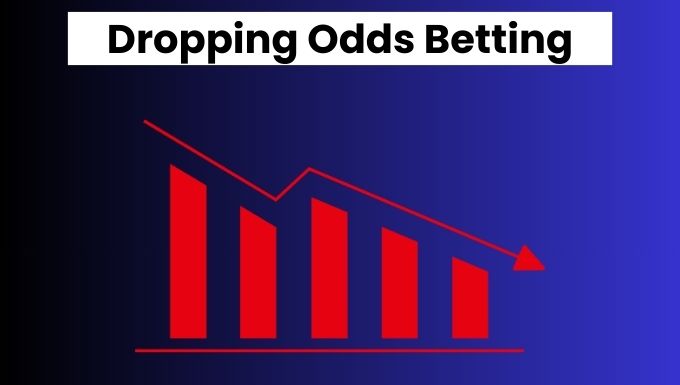Predicting comeback victories isn’t just luck or gut feeling. It’s about recognizing patterns, understanding the dynamics, and staying sharp. There are always signs if you know where to look: a sudden shift in momentum, an underestimated player stepping up, or even subtle changes in strategy. From analyzing team morale to spotting physical or mental fatigue in the opposition, there’s a lot to unpack.
There’s nothing more satisfying in sports than witnessing or pulling off a dramatic comeback. Whether it’s an underdog rising from defeat or a team turning a sure loss into an unforgettable victory, turnaround moments remind us that anything is possible with the right mindset and strategy. But how do you predict when those epic comebacks are about to happen?

Team Dynamics and Morale.
When it comes to predicting turnaround victories, team dynamics and morale are crucial elements that can’t be overlooked. I’ve always believed that a team isn’t just a collection of talented players; it’s a living, breathing entity. The relationships among teammates can significantly influence their performance on the field or court.
When morale is high, players tend to support each other more, communicate effectively, and exhibit a level of trust that can turn the tide in challenging moments. I’ve seen teams rally together after a tough loss, using that shared experience to fuel their determination. Conversely, when morale dips perhaps due to internal conflicts or a string of losses it can lead to a downward spiral. Players may become hesitant, second-guessing their instincts and decisions.
A positive team dynamic fosters an environment where players feel empowered to take risks and make bold plays. It’s that unshakeable belief in one another that often sparks remarkable comebacks. So, when assessing a team’s potential for a turnaround victory, pay attention to the vibes in the locker room and on the sidelines.
Psychological Factors
When it comes to predicting turnaround victories, the psychological factors at play are truly fascinating. As a sports fan, I’ve often marveled at how a team can go from looking defeated to suddenly igniting a fire within themselves. It’s all about mindset.
One key element is resilience. Teams that can bounce back from setbacks often possess a strong mental fortitude. This resilience is not just about individual players; it’s about the collective belief in their ability to overcome adversity.
Another important factor is the pressure of expectations. Sometimes, a team is favored to win, and the weight of those expectations can lead to anxiety and underperformance. Conversely, when they are the underdogs, they might play with a sense of freedom and determination that surprises everyone.
Finally, the role of confidence cannot be overstated. A single successful play can ignite a spark of belief that transforms the entire game. Watching a team build on that confidence as they claw back into contention is one of the most thrilling aspects of sports. In essence, psychology is often the hero behind those unforgettable turnaround victories!
Statistical Trends
Diving into statistical trends is like uncovering hidden gems in a treasure hunt. As a sports enthusiast, I’ve always been fascinated by how numbers tell stories about teams and games. Historical data reveals intriguing patterns that can give us insights into potential comebacks.
For instance, consider the significance of scoring patterns. Teams that have a strong second-half performance often flip the script on their opponents. Analyzing past games, you might notice that certain teams consistently rally from behind after halftime. This trend suggests a combination of strategic adjustments and mental fortitude.
Another key statistic is the impact of home-field advantage. Home teams often perform better in pressure situations, which can lead to thrilling turnarounds. The energy of the crowd can be a game-changer.Moreover, looking at player performance metrics like clutch statistics can provide clues about who thrives under pressure. Players who excel in high-stakes moments can be pivotal in turning the tide.
Coaching Strategies
Coaching strategies play a pivotal role in orchestrating turnaround victories, and I’ve always found this aspect of sports fascinating. A great coach doesn’t just manage the game; they inspire and adapt. One key strategy is the ability to read the game and make timely adjustments. For instance, if a team is struggling against a specific defense, a coach might tweak the offensive playbook mid-game, introducing new formations or plays that exploit weaknesses.
Another vital element is fostering a positive mindset. Coaches who instill confidence in their players can turn the tide during challenging moments. Encouragement and constructive feedback can transform doubt into determination, especially when the stakes are high. I’ve seen teams rally after a coach’s impassioned speech, igniting a fire that leads to stunning comebacks.
Additionally, effective communication is crucial. Coaches who maintain open lines with their players can identify issues quickly and address them before they escalate. This adaptability not only helps in strategizing but also builds trust within the team.Ultimately, successful coaching during critical moments combines tactical knowledge with emotional intelligence, creating an environment where players believe in themselves and each other, leading to turn around victories.
In-Game Adaptability
In-game adaptability is one of the most fascinating aspects of sports. It’s that moment when a team, faced with unexpected challenges, shifts gears and finds a way to turn the tide. I’ve seen it happen countless times where teams that start off sluggishly, only to ignite a spark of creativity and resilience that leads to a stunning comeback.
Take, for instance, a basketball game where the opposing team is dominating. The coach might call for a sudden change in strategy by switching from a man-to-man defense to a zone defense can completely disrupt the opponent’s rhythm. Players need to be quick on their feet, not just physically but mentally as well. They must read the game, anticipate plays, and adjust their roles on the fly.
This adaptability isn’t just about tactics; it’s about mindset. Players who embrace change and remain calm under pressure often find success. They communicate effectively, support each other, and stay focused on the goal. It’s this blend of strategy and mental fortitude that makes in-game adaptability so crucial.
In the unpredictable world of sports, predicting turnaround victories can feel like an exhilarating challenge. From my experience, it’s essential to consider a blend of factors that contribute to a team’s potential for a comeback. First and foremost, team dynamics play a crucial role. A squad that fosters strong communication and trust can often rally together during tough times, igniting a spark that leads to unexpected triumphs.
Moreover, analyzing past performance is key. Teams with a history of resilience tend to bounce back more effectively, so looking at their previous games can provide valuable insights. Don’t overlook the impact of coaching strategies; a skilled coach can make all the difference in adjusting tactics mid-game to exploit the opponent’s weaknesses.
Finally, the psychological aspect cannot be underestimated. A team’s mental fortitude—its ability to stay focused and motivated despite setbacks—often separates the victors from the vanquished. By keeping these elements in mind, we can enhance our ability to predict those thrilling turnaround victories.


